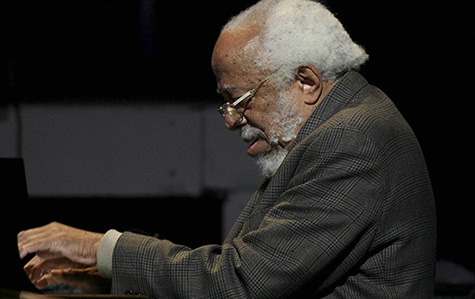
Tuomo Uusitalo
Tuomo is an award-winning pianist, composer, arranger and educator. Having released two albums as a leader, he has established himself in the New York jazz scene and continues touring internationally both as a leader as well as sideman.
Live Seminar Resources
Live Seminar Resources
PDF Downloads
- Seminar PDF Handout
Join PianoGroove Pro to access all downloads and learning resources.
Download theory supplements, midi files, chord changes and full note-for-note transcriptions of every lesson.
- Bill Evans - 'Waltz For Debby' Transcription
Join PianoGroove Pro to access all downloads and learning resources.
Download theory supplements, midi files, chord changes and full note-for-note transcriptions of every lesson.
- Bill Evans - 'April In Paris' Transcription
Join PianoGroove Pro to access all downloads and learning resources.
Download theory supplements, midi files, chord changes and full note-for-note transcriptions of every lesson.
- Hank Jones - 'Satin Doll' Transcription
Join PianoGroove Pro to access all downloads and learning resources.
Download theory supplements, midi files, chord changes and full note-for-note transcriptions of every lesson.
Related Lessons
Forum Threads
Seminar Description
Seminar Description
Drop 2 Voicings In 251s & Bill Evans Style Drop 2 Voicings
Introduction To Drop 2 Voicings
In this session, we will delve into the intricate world of drop 2 voicings; a fundamental technique in jazz piano voicings. This seminar will provide a comprehensive review of drop 2 voicings, focusing on their application in various musical contexts, including 251 progressions, applying to jazz standards, and highlighting the use of Bill Evans’ drop 2 voicings in his solo piano work.
Understanding Drop 2 Voicings
Drop 2 voicings are an important concept in jazz piano arranging and performance. Essentially, drop 2 refers to taking any voicing and lowering the second highest note by an octave. This technique creates a more open, resonant sound compared to closed position voicings, where all notes are voiced within one octave.
Historical Context Of Drop 2 Voicings
The origins of drop 2 voicings can be traced back to classical music, particularly the Baroque period, where composers often used this method to arrange music for choirs and other ensembles. The method gained prominence in jazz through the teachings of Barry Harris and has become a staple in modern jazz piano.
Practical Application of Drop 2 Voicings
To effectively utilise drop 2 voicings, it’s essential to practice them thoroughly in all 12 keys and in both Type A and Type B. This method can be applied to any chord either in or outside of a 251 progrssion and we also explore more complex drop 2 voicings applications which incorporate chord alterations, inner voice movement, and drop 2 chord inversions.
Drop 2 Voicings in 251 Progressions
The most common progression in jazz is the 251 (ii-V-I) progression which can be voiced with drop 2 voicings. Practicing 251 progressions in both major and minor keys using drop 2 voicings will provide a solid foundation for improvisation and accompaniment.
In this session we examine the 251 progression in major and minor keys and learn how to voice these chords using the drop 2 voicing method.
Bill Evans Drop 2 Voicings
Bill Evans, a legendary jazz pianist, was known for his sophisticated use of drop 2 voicings. By studying his arrangements and recordings, such as “Waltz for Debby” and “April in Paris,” we can gain insights into his approach to voice leading and chordal textures. These examples are advanced and so ensure that you can play drop 2 voicings in 251s in their most basic form, starting with rooted voicings, and then learning the rootless variations.
Drop 2 Transcriptions & PDF Files
The supporting materials for this seminar include the seminar handout PDF, transcription files, and audio tracks, which are all available in the Resources section for further study and practice. Visit the forum to find the isolated backing tracks to practice along with.
Drop 2 Voicing Variations and Advanced Techniques
Once you have mastered the basic drop 2 voicings, you can explore variations and advanced techniques:
Inner Voice Movement: Create movement within the voicing by altering the inner notes.
Different Inversions: Experiment with different inversions of the same chord using drop 2 voicings.
Color Tones: Incorporate color tones such as the 9th, 11th, and 13th to add richness to your voicings.
Drop 2 Voicings Benefits
Mastering drop 2 voicings opens up a world of possibilities in jazz piano. Whether you’re accompanying a vocalist, improvising a solo, or arranging a piece, the principles covered in this seminar will enhance your musicality and chord voicings when playing jazz piano. For any questions or further guidance, feel free to reach out in the comments section below, or in the community area.








Tuomo such a great lesson really appreciated it watched it twice. Thank you for sharing. By the way the link to Satin Doll transcription doesn’t work for me.
Thanks,
Steve
I found it in the forum Tuomo and got it. Just the link above affected. Thanks again!
Great, let me know if I can assist in any other way!